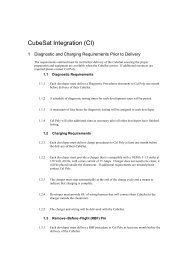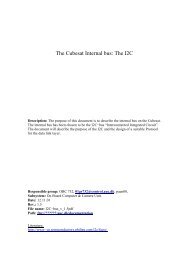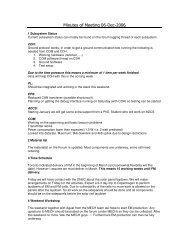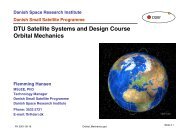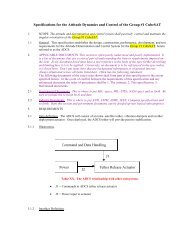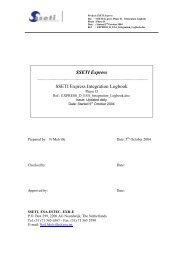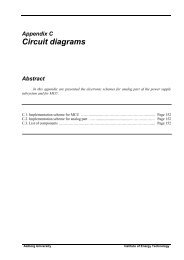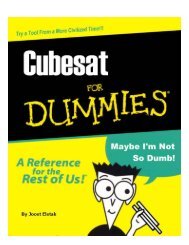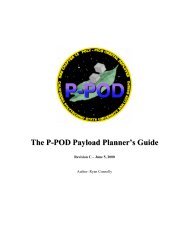DTU Satellite Systems and Design Course CubeSat Communication
DTU Satellite Systems and Design Course CubeSat Communication
DTU Satellite Systems and Design Course CubeSat Communication
You also want an ePaper? Increase the reach of your titles
YUMPU automatically turns print PDFs into web optimized ePapers that Google loves.
Danish Space Research Institute<br />
Danish Small <strong>Satellite</strong> Programme<br />
Thermal Noise - 1<br />
Everywhere Noise<br />
Any electronic circuit produces noise, thus limiting hoe small a signal we may amplify<br />
<strong>and</strong> detect. Even the most simple electronic component, a resistor, creates noise.<br />
Additionally, noise will be captured by an antenna looking into space from the cosmic<br />
background radiation <strong>and</strong> from the attenuation of the radio waves passing through the<br />
atmosphere caused by water vapour.<br />
Noise calculations again rely on power considerations. Using the theory of<br />
thermodynamics it can be shown that an ideal ohmic resistor in thermal equilibrium at<br />
absolute temperature T will produce an ”available noise power” P n given by<br />
P n = kTW = N 0 ·W where N o = kT<br />
k is Boltzmann's constant k = 1.38062·10 -23 J/K<br />
W is the width of the frequency b<strong>and</strong> containing our signal<br />
N 0 is the noise spectral density, has the unit Watt per Hertz of b<strong>and</strong>width <strong>and</strong> denotes<br />
the noise power available in a 1 Hz b<strong>and</strong>. In many cases N 0 is a constant<br />
FH 2001-08-27 Cubesat_<strong>Communication</strong>.ppt<br />
Slide # 14



